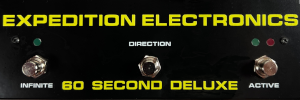Showing posts with label Trevor Pinch. Show all posts
Showing posts with label Trevor Pinch. Show all posts
Saturday, May 03, 2014
Electric Golem Concert Tonight at Switched-On Moog Event
via Tevor Pinch of Electric Golem: "Most of you know this already and please forgive this mass email. The Electric Golem will be performing tonight Saturday, May 3, in a free concert at the Tompkins County History Center (bottom of 79 on the left) as part of the 'Switched On Moog Exhibit' which just opened. We will play two pieces 'Scarecrow Outage' and 'Theater on the Sun'. Jim will have his theremin and I will have my Moogs and home-made modular synth."
See this post for info on Trevor Pinch's DIY modular synth as well as the Trevor Pinch label below.
Monday, April 01, 2013
DIY Electronic Music Symposium, Cornell University, 2013 Pics

Follow-up to this post.
flickr set by exakta
(click through for more)
Pictured here:
Top: "Malcolm Cecil [portion of TONTO in background], James Spitznagel and Trevor Pinch Jamming. Trevor is playing an analogue synth which he himself built in the early 1970s." [see this post for details & pics]
 Bottom: "Simeon Coxe of Silver Apples"
Bottom: "Simeon Coxe of Silver Apples"Description for the set:
"On March 30th, 2013, Cornell University and The Fanclub Collective sponsored a day-long electronic music workshop. It included a panel discussion with Professor Trevor Pinch, Malcolm Cecil, Simeon Coxe and Jeff Perkins (a veteran light-show producer) and a hands-on DIY synth-circuit-building workshop. The final events were performances, first by regional acts (First Atomic Lunar, members of Atomic Forces & First North American Lunar), 100% BLAKK), then by Ithaca synth ensemble Electric Golem (Trevor Pinch and James Spitznagel). Malcolm Cecil and his vintage mega-synth, TONTO (that's "The Original New Timbral Orchestra") played an incredible set, as did half of the sixties electro-rock duo Silver Apples, Simeon Coxe.
I would highly recommend any of these acts' recordings!
More info here:
en.wikipedia.org/wiki/TONTO#The_TONTO_sy nthesizer
en.wikipedia.org/wiki/Silver_apples
www.facebook.com/electricgolem
firstnorthamericanlunar.bandcamp.com/
(Atomic Forces) www.myspace.com/107098519
(100% BLAKK) www.facebook.com/pages/100-Black/3858969 81449017"
Tuesday, March 26, 2013
DIY ELECTRONICS SYMPOSIUM: Workshops, Silver Apples with Malcolm Cecil on TONTO, Electric Golem with Trevor Pinch on DIY Modular

via Trevor Pinch: "This Saturday March 30 at Cornell Schwartz Center for The Performing Arts we are putting on a cool event which we are calling a 'DIY Electronics Music Symposium'. It will feature panel discussion on DIY electronics (starts 2pm), workshops where you can build your own gear, and a concert (starts 8pm) featuring, Silver Apples, Malcolm Cecil with TONTO, Electric Golem (with Trevor Pinch on DIY Modular [see this post]) plus more.
I know it's short notice but any synth heads in the area might want to check it out. As far as we can tell TONTO and Silver Apples have never been on the same bill together."

Details:
"DIY ELECTRONICS SYMPOSIUM:
SATURDAY MARCH 30
An afternoon and evening celebrating innovation in electronic media,
///TOGETHER FOR THE FIRST TIME EVER:
the legendary Simeon Coxe of Silver Apples and Malcolm Cecil of Tonto's Expanding Head Band,
The afternoon symposium will commence with a panel discussion led by Science and Technology Studies professor Trevor Pinch followed by demonstrations of various home made electronic instruments including the largest synthesizer in the world, The Original New Timbral Orchestra. Doctoral candidates Taylan Cihan (Music), Laewoo Kang (Information Science) and Owen Marshall (Science and Technology Studies) will then lead a DIY Electronics workshop allowing participants to create and keep their own small electronic instruments.
~challenge the politics of expertise~
~explore motivations for innovation~
In the evening from 8-11 a musical and visual 'happening' will be put on with Tonto's Expanding Headband, Silver Apples, The Electric Golem, First Atomic Lunar and more to perform.
__S_C_H__E__D__U__L__E_
2PM-3PM
Panel Discussion Chaired by Trevor Pinch
featuring: Malcolm Cecil, Simeon Coxe, Jeff Perkins, Park Doing.
3:30pm-5:30pm
DIY Electronics Workshop and Demonstrations
-Circuit hacking, bending and creating your own instruments from parts. All materials provided for limited number of participants
provided by Cornell Electroacoustic Center, led by Taylan Cihan, Owen Marshall, and Leo Kang
____________________________________
8PM-11PM
MULTIMEDIA PSYCHADELIC PERFORMANCE
*Silver Apples
*Tonto's Expanding Head Band
*Electric Golem
*First Atomic Lunar
*100% Black
feat DJ Andris Balins
Visual media provided by Jeff Perkins, Park Doing, Leo Kang
The events are free and open to the entire Cornell Community.
Contributions are encouraged to support opening acts.
Made possible by The Cornell Council for the Arts, The Department of Electrical and Computer Engineering, The Cornell Electroacoustic Music Center, The Society for the Humanities, The Science and Technology Studies Department, and the SAFC."
See the TONTO & Trevor Pinch labels below for more including videos and pics.
Friday, April 13, 2012
Mick Jagger with Moog Modular in Performance
 You might remember Mick Jagger in Performance from the video below posted back on March 24, 2011. The Alternative Shipping Forecast has a post up with additional details on the Moog system used. Click through for the full post.
You might remember Mick Jagger in Performance from the video below posted back on March 24, 2011. The Alternative Shipping Forecast has a post up with additional details on the Moog system used. Click through for the full post. "In Analog Days: The invention and impact of the Moog synthesizer [on Amazon], Trevor Pinch and Frank Trocco tell the story of Jon Weiss, the Man from Moog, who traveled to London in the summer of 1968 with a series of black carrying cases that contained the component parts of the Moog Series III modular synthesizer. His students in London were to be the Rolling Stones, whose manager, Allan Klein, had managed to convince Robert Moog that, for promotional purposes, the Stones would receive a Moog synthesizer and a week’s free tuition...
The Stones’ electronic experiments come to the fore not on any of their studio albums, but on the tracks they recorded for Performance, the Donald Cammell/Nicolas Roeg film that was in production at exactly that moment. Mick was so taken with the device that it became a prop in the film itself, its aura of technological futurity fitting well with the film’s experimentalism and surrealism."
YouTube Uploaded by Performance786 on Apr 18, 2009 - (previously posted here)
via f*mass
Previous posts mentioning Mick Jagger:
1970 Mick Jagger on a Moog Modular (video above)
Flight of the Conchords Ep 6 Bowie's In Space
Moog - Early Days in Rock
Speak & Math Circuit Bent Glitch Synthesizer
Thursday, August 25, 2011
Electric Golum Performance to Feature Trevor Pinch Vintage Custom Modular
 See this post for details on the modular. It's a unique piece of synth history. See this post for info on the upcoming show.
See this post for details on the modular. It's a unique piece of synth history. See this post for info on the upcoming show.
Wednesday, August 24, 2011
The Electric Golem at the State of the Art Gallery
YouTube Uploaded by divinewoman on Aug 20, 2011
"James Spitznagel and Trevor Pinch (author of Analog Days) performed in Ithaca's State of the Art Gallery. Audio is taken from a live recording in the gallery. Commentary by James Spitznagel and Ithaca art critic, Arthur Whitman."
The Electric Golem released their second CD last weekend and are working on a third. They will be performing at Castaways in Ithaca Saturday August 27 with the Atomic Forces. Trevor Pinch will have his modular synth with him.
Side note: you can find links for Analog Days in the Synth Books section.
Monday, July 18, 2011
The Electric Golem Live & New CD “Sky Snails"
The Electric Golem - STS Morrisville - 4-21-2011 - Part 1 of 2
YouTube Uploaded by KurtKarsin on May 26, 2011
"This video (Part 1 of 2) features The Electric Golem, an electronic improvisational synthesizer duo from Ithaca, NY. Here they are performing a piece titled "What Watson Doesn't Know" at Morrisville State College (NY) at the fifth annual Science, Technology and Society Symposium, titled "Technomusia: Science, Technology and Music" (more at www.morrisville.edu/sts). The program also featured Roy "Futureman" Wooten the synth drummer from Bela Fleck and the Flecktones.
The Electric Golem is composed of Trevor Pinch and James Spitznagel, who yield generative, modern psychedelic mindscapes thanks to Pinch's command of his Moog Prodigy and homemade modular synths, and Spitznagel's battery of similar devices like the Evolver, Mopho, Tenori-on, Nintendo DSi, iPod Touch, and Orb Sequencer. During his daylight hours, Pinch is Professor of Science and Technology Studies and Professor of Sociology at Cornell University, and the coauthor of perhaps the definitive book on synthesizer technology, Analog Days: The Invention and Impact of the Moog Synthesizer. Spitznagel is a true techno-polyglot, a digital computer artist, photographer, and sonic provocateur who has released all manners of twisted electronica on his Level Green imprint, and continues to raise the bar for circuit-based music as he craftily wrestles with the vagaries of tone, glitch, frequency, and pulsation."
The Electric Golem - STS Morrisville - 4-21-2011 - Part 2 of 2
 via Trevor: "our new CD “Sky Snails" has just been released by Periphery records www.otperiphery.com [link]:
via Trevor: "our new CD “Sky Snails" has just been released by Periphery records www.otperiphery.com [link]:
The CD was endorsed by our ginger cat, Mango, who loved Sky Snails – unfortunately the day after the record came out Mango vanished from this Earth!
Sky snails is also available on iTunes for downloading. It consists of three tunes: the melodic “What Watson Doesn’t Know”; the Space Noise medley, “Sky Snails Part One”; and the cosmic “Sky Snails Part Two”.
Shortly also to be released on Periphery is one track of our live collaboration with Macolm Cecil of Stevie Wonder and Tonto’s Expanding Headband fame. That CD comes out August 5
We plan a CD release party/concert on Saturday August 20 in Ithaca at The State of the Art Gallery – so mark that date in your diaries if you're in or near Ithaca
Meanwhile have a great summer. We are back in the studio working on our third album. And if you see a big ginger cat anywhere who likes electronic music please let me know! We miss him terribly!
Trevor"
YouTube Uploaded by KurtKarsin on May 26, 2011
"This video (Part 1 of 2) features The Electric Golem, an electronic improvisational synthesizer duo from Ithaca, NY. Here they are performing a piece titled "What Watson Doesn't Know" at Morrisville State College (NY) at the fifth annual Science, Technology and Society Symposium, titled "Technomusia: Science, Technology and Music" (more at www.morrisville.edu/sts). The program also featured Roy "Futureman" Wooten the synth drummer from Bela Fleck and the Flecktones.
The Electric Golem is composed of Trevor Pinch and James Spitznagel, who yield generative, modern psychedelic mindscapes thanks to Pinch's command of his Moog Prodigy and homemade modular synths, and Spitznagel's battery of similar devices like the Evolver, Mopho, Tenori-on, Nintendo DSi, iPod Touch, and Orb Sequencer. During his daylight hours, Pinch is Professor of Science and Technology Studies and Professor of Sociology at Cornell University, and the coauthor of perhaps the definitive book on synthesizer technology, Analog Days: The Invention and Impact of the Moog Synthesizer. Spitznagel is a true techno-polyglot, a digital computer artist, photographer, and sonic provocateur who has released all manners of twisted electronica on his Level Green imprint, and continues to raise the bar for circuit-based music as he craftily wrestles with the vagaries of tone, glitch, frequency, and pulsation."
The Electric Golem - STS Morrisville - 4-21-2011 - Part 2 of 2
 via Trevor: "our new CD “Sky Snails" has just been released by Periphery records www.otperiphery.com [link]:
via Trevor: "our new CD “Sky Snails" has just been released by Periphery records www.otperiphery.com [link]:The CD was endorsed by our ginger cat, Mango, who loved Sky Snails – unfortunately the day after the record came out Mango vanished from this Earth!
Sky snails is also available on iTunes for downloading. It consists of three tunes: the melodic “What Watson Doesn’t Know”; the Space Noise medley, “Sky Snails Part One”; and the cosmic “Sky Snails Part Two”.
Shortly also to be released on Periphery is one track of our live collaboration with Macolm Cecil of Stevie Wonder and Tonto’s Expanding Headband fame. That CD comes out August 5
We plan a CD release party/concert on Saturday August 20 in Ithaca at The State of the Art Gallery – so mark that date in your diaries if you're in or near Ithaca
Meanwhile have a great summer. We are back in the studio working on our third album. And if you see a big ginger cat anywhere who likes electronic music please let me know! We miss him terribly!
Trevor"
LABELS/MORE:
DIY,
DSI,
Featured,
Future Retro,
MOOG,
Nintendo,
Tenori-On,
Trevor Pinch,
Video,
Yamaha
Sunday, April 17, 2011
The Electric Golem at Mabel Sound
 flickr set by mabel.sound
flickr set by mabel.sound"I record a couple of Electric Golem sets in the studio. Trevor Pinch on Moog Prodigy and DIY modular, Jim Spitznagel on Evolver, Mopho, iPod, Nintendo DS, and Tenori-On."
See this post for an exclusive on Trevor Pinch's DIY modular.
Tuesday, February 01, 2011
The Electric Golem CD Release & Performance
 via The Electric Golem on Facebook
via The Electric Golem on Facebook"Saturday, February 5 · 5:00pm - 7:00pm
State Of The Art Gallery
120 W. State Street
Announcing the CD and Digital release of The Electric Golem's debut album. The Electric Golem are: Trevor Pinch & James Spitznagel. Come join us for a mini-concert of electronic/ improvised/ experimental music featuring The Electric Golem (of course) and Laika and the Luddite Machine. We are hosting this event at the fabulous State of the Art Gallery in downtown Ithaca."
See the Trevor Pinch label below.
Monday, December 13, 2010
The Electric Golem at Mabel Sound - Trevor Pinch and James Spitznagel
 flickr set By mabel.sound
flickr set By mabel.sound(click for more)
The Electric Golem recordings now available on Ricochet Dream.
"Electric Golem sets in the studio. Trevor Pinch on Moog Prodigy and DIY modular, Jim Spitznagel on Evolver, Mopho, iPod, Nintendo DS, and Tenori-On."
Note Trevor Pinch's DIY modular
via Inverse Room


Wednesday, August 18, 2010
The Electric Golem at Mabel Sound - Trevor Pinch & Inverse Room
 flickr set by mabel.sound
flickr set by mabel.sound(click for more)
"I record a couple of Electric Golem sets in the studio. Trevor Pinch on Moog Prodigy and DIY modular, Jim Spitznagel on Evolver, Mopho, iPod, Nintendo DS, and Tenori-On."
See this post for more info on Trevor Pinch's modular.

Monday, April 26, 2010
Trevor Pinch's Vintage DIY Modular Synth


via Inverse Room, via Muff's:
"You guys will dig this.
Some of you probably know Trevor Pinch from his book Analog Days [Amazon hardcover & paperback, preview on Google books], about the history of the Moog synthesizer. Trevor's a friend of mine--we both teach at Cornell U.--and he recently restored his moribund DIY modular that he built in the seventies. Last night he and our friend James Spitznagel (together they are Electric Golem) played a show here in Ithaca, with Trevor on his synth and Jim using a Mopho, Evolver, Orb, Nintendo DS and various iPhone apps.
Oh BTW sorry these are not better photos. I should have brought a DSLR for this but I had a digital rangefinder camera with me that is not so hot at high ISO. Full set is here (for now): http://inverseroom.creotia.com/golem/"
 I contacted Trevor Pinch and he had the following to share:
I contacted Trevor Pinch and he had the following to share:"Hey Matrix:
I built that synth in London in 1973. I used it til 1975/6 in a collective band/scene in London and then in Manchester - we also had a VCS3 and various gizmos from EMS as one of our band knew Tristram Cary, one of the founders of EMS. By the way anyone interested in EMS should check out the half hour documentary Matt Bates made for Australian TV - 'What the Future Sounded Like'. I was a talking head for that movie. It's got tons of info in it and great clips of Hawkwind, music of early Floyd etc [below].
My synth was kinda in storage before being shipped to the States in 1990. It was smashed up badly in the move and I only started work on it again a few months ago when Park Doing here in Ithaca persuaded me to get it going to jam with Johnny Dowd, Richie Stearns, Brian Wilson, and others for a 'Requiem for Analog TV' show we did at Cornell. Since then I've played out with it a couple of times with Park's band, the Atomic Forces, and once with The Electric Golem with Jim Spitznagel.
The schematics come from the hobby magazine Wireless World August 1973. Tim Orr did the design (he was the same guy who designed the EMS Vocoder). I built it 1973. The Voltage Control filter is online [link]
 VCO 1 has square, triangle, sine , and variable mark space (I think in the US they call it duty cycle - adjusting the width of the top of a square wave). It turns out the variable mark space is one of the most musically useful controls I know.
VCO 1 has square, triangle, sine , and variable mark space (I think in the US they call it duty cycle - adjusting the width of the top of a square wave). It turns out the variable mark space is one of the most musically useful controls I know.It has three frequency ranges from very low to way up there! There are two VCO inputs with 1 K pots to control the voltage in.
VCO 2 has square, triangle, sine, ramp, and pulse outputs. There are two VCO inputs with 1 K pots ditto.
VCO 3 is a six-step sequencer with an incredible frequency range, with each step selectable and tunable. This is the awesome guts of the beast. There are two VCO inputs with one K pots. You feed the sequencer output as an input into the VCO1 and VCO2 and away you go.
There are also the following modules:
2 voltage control amplifiers
2 exponential converters
A keyboard module for operating a resistor chain monophonic keyboard - I abandoned the keyboard as I could never get it in tune and it sounded better out of tune!
I voltage control filter - band pass or low pass output - band pass only is working
I mixer with three channels and two virtual earth mixers for summing and reversal with three channels each,
White noise source and blue and red noise (variable) outputs
Spring reverb.
Envelope shaper. Not yet working
Two preamps. Buggered.
2 very low frequency outputs. Not yet working.
Sample and hold - Never worked!
Joy stick control and circuits with two pots providing variable X and Y voltages.
The joystick is home built by using three pots (design based on the first one that David Cockerell made for VCS3) my killer control for live performance (think Brian Eno and the way he used the joystick on the VCS3 (Putney)). The joystick was beat up terribly in the move and was the hardest single thing to get working and nicely balanced. Read the story of how the pitch and mod wheel were designed for the minimoog in Analog Days! Having a controller that feels right when you play is for me half the battle.
There is an onboard power supply for 240 volts in and 15v plus and minus and 5 volts plus out. Useless in US! So got new power supply built.
 The modules are mainly built on plug in breadboards made by a UK company called Electrokit. So when I blow out transistors - happens all the time - I can unplug for easy access. Also I like to leave it open so shaking the instrument shakes the modules and affects the sound and of course the reverb. Opening the black box is my aesthetic.
The modules are mainly built on plug in breadboards made by a UK company called Electrokit. So when I blow out transistors - happens all the time - I can unplug for easy access. Also I like to leave it open so shaking the instrument shakes the modules and affects the sound and of course the reverb. Opening the black box is my aesthetic.Housed in hand machined painted aluminium case (wise choice in hindsight as it is sturdy, light and didn't rust!)
Patch bay is banana plugs, wires and sockets (what we used to call banana plugs or Wonder plugs in the UK). US banana plugs are too big - anyone know where I can get the UK banana plugs from as I need more?
If anyone is interested in my early experiences in playing the synth, they are written up in a chapter in a book by Sherry Turkle, Evocative Objects - the reflection is online at a awesome exhibition, "Remix, Rewind and Replay" at Scottsdale Museum of Contemporary Art which I was on a panel for. http://www.rewindremixreplay.org/pdfs/pinch.pdf
By the way, that essay was written before I got the synth working again. In that essay I said the synth had no name. When I unearthed the old schematics to start soldering work I found I did give it a name, "Stray Capacitance". That's what the synth was like - full of capacitance.
The synth truly has a unique sound : the sonic energy is simply amazing. It can cut through like a chain saw on magic mushrooms - everything sort of feeds back on everything else in various unpredictable ways. Its like a live bucking beast to control. Park Doing says I shouldn't call it a synth and I agree. It's more a sometimes controllable sound and noise maker. John Robert Lennon (aka Inverse Room) on seeing and hearing it in action the other day - said how come it just doesn't explode. It's a miracle that it works at all! Its industrial sound is awesome in a punk band and when playing alongside someone with more varied and sweeter sounds (like Jim Spitznagel can produce) it can cut through and complement and attract attention. With the spring reverb it sends you into space. In the early days we also used to use huge tape loops as well.
That's it!
Trevor"
I'd like to give a huge thanks to Trevor Pinch for taking the time out to share this with us and of course Inverse Room for sending this our way.
YouTube via inverseroom — April 25, 2010 —
"Inverse Room interviews Trevor Pinch, author of "Analog Days" and other books about the history of technology, who demonstrates the DIY modular synth he built in the 1970's.
The thing I find really cool about this design is the step sequencer that can be run at high enough speeds to create, in effect, a new oscillator with primitive custom waveforms. And of course there's the total lack of sides to the case--gotta love that, too!"
NEXT PAGE
HOME
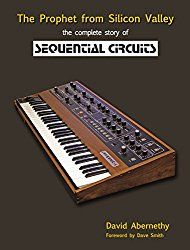



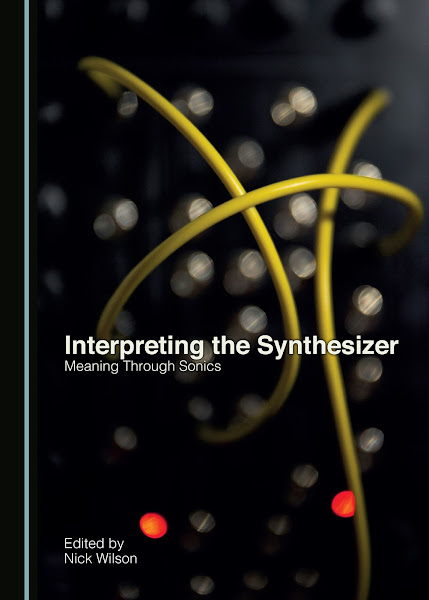


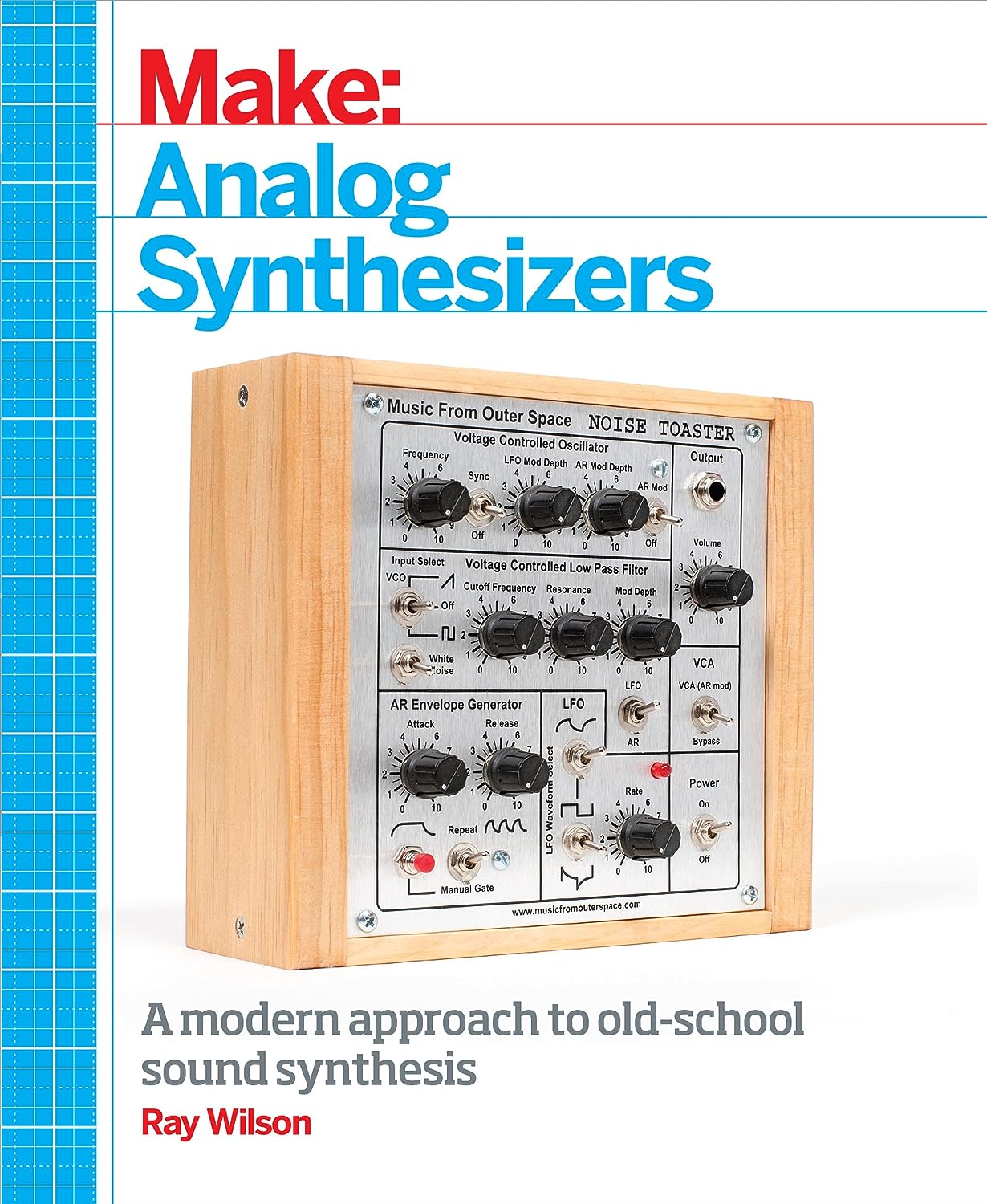

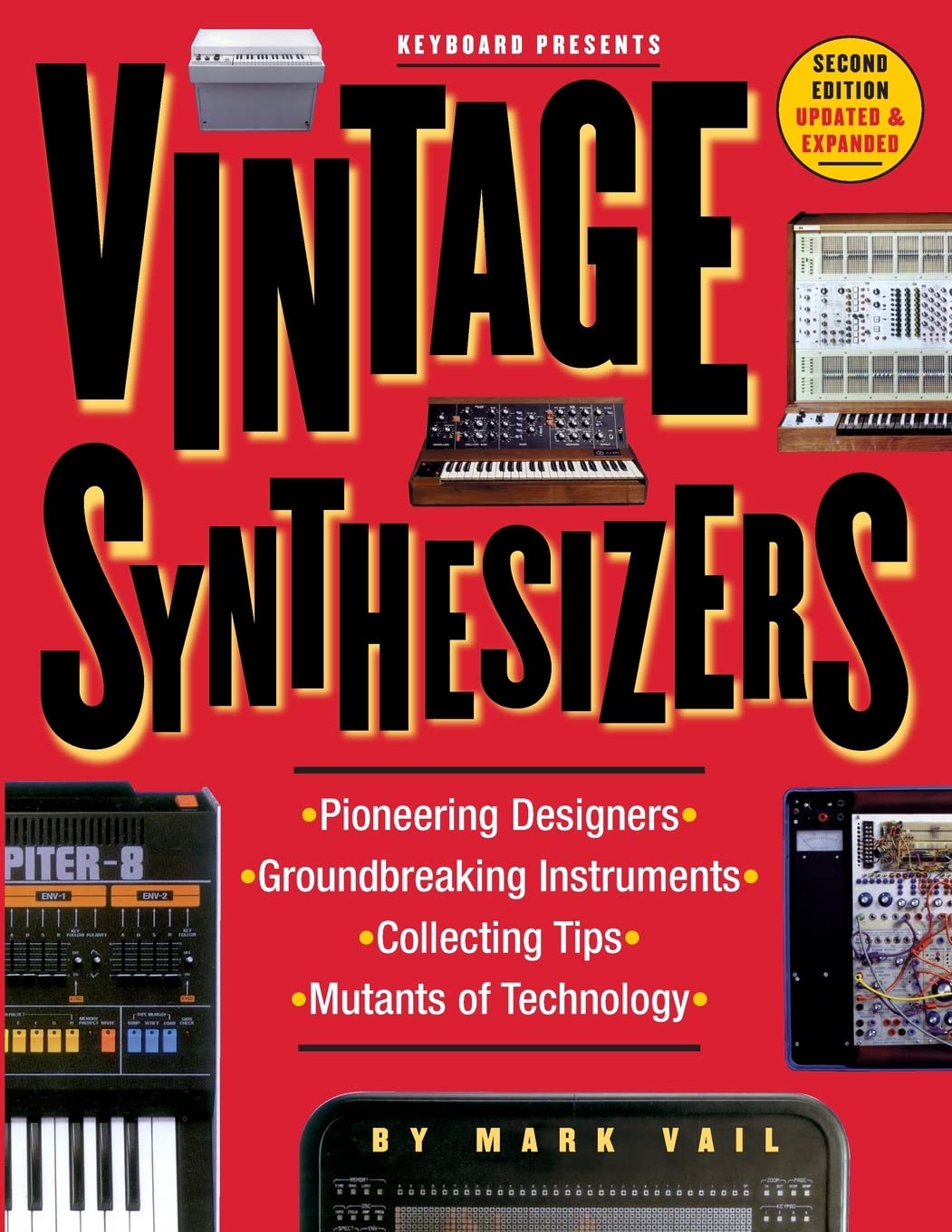
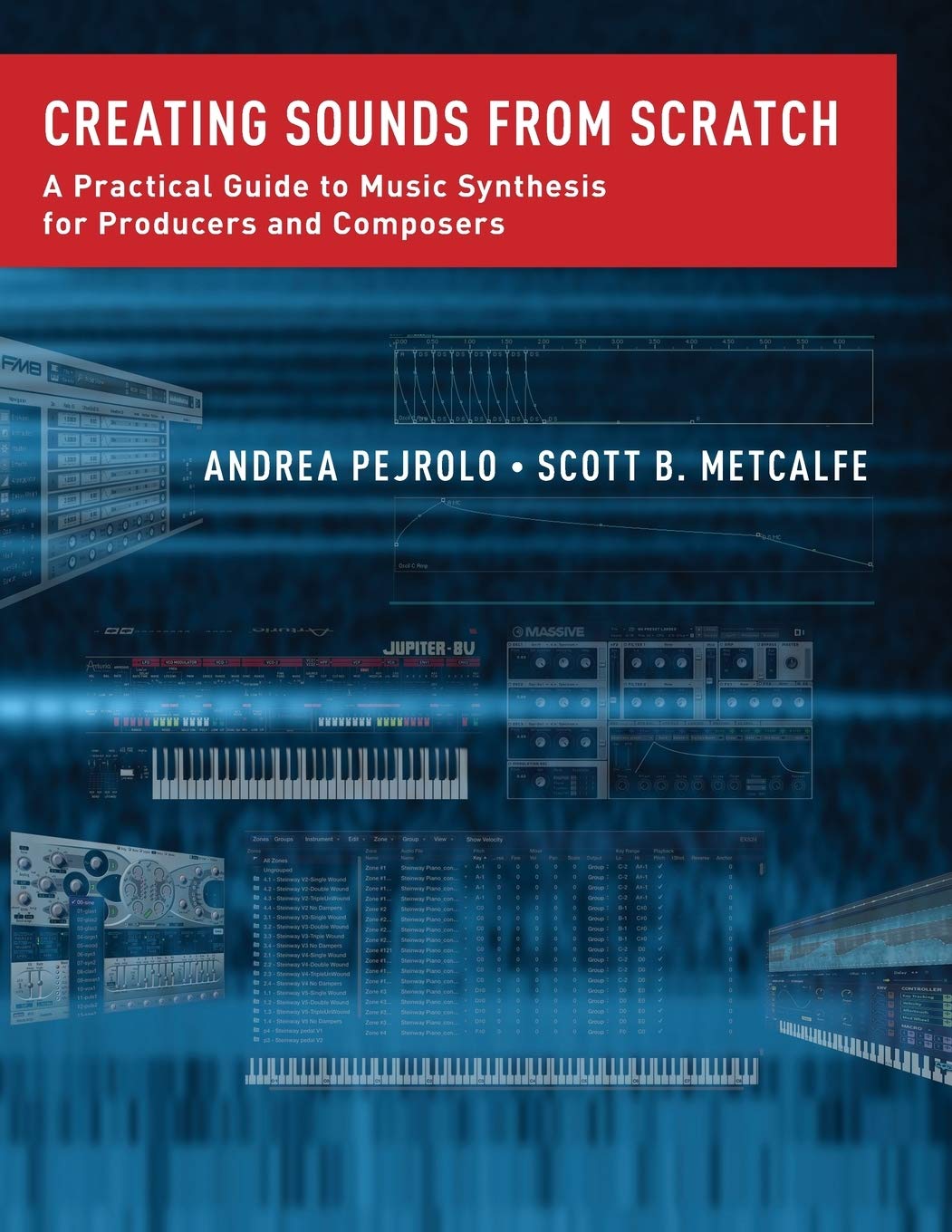
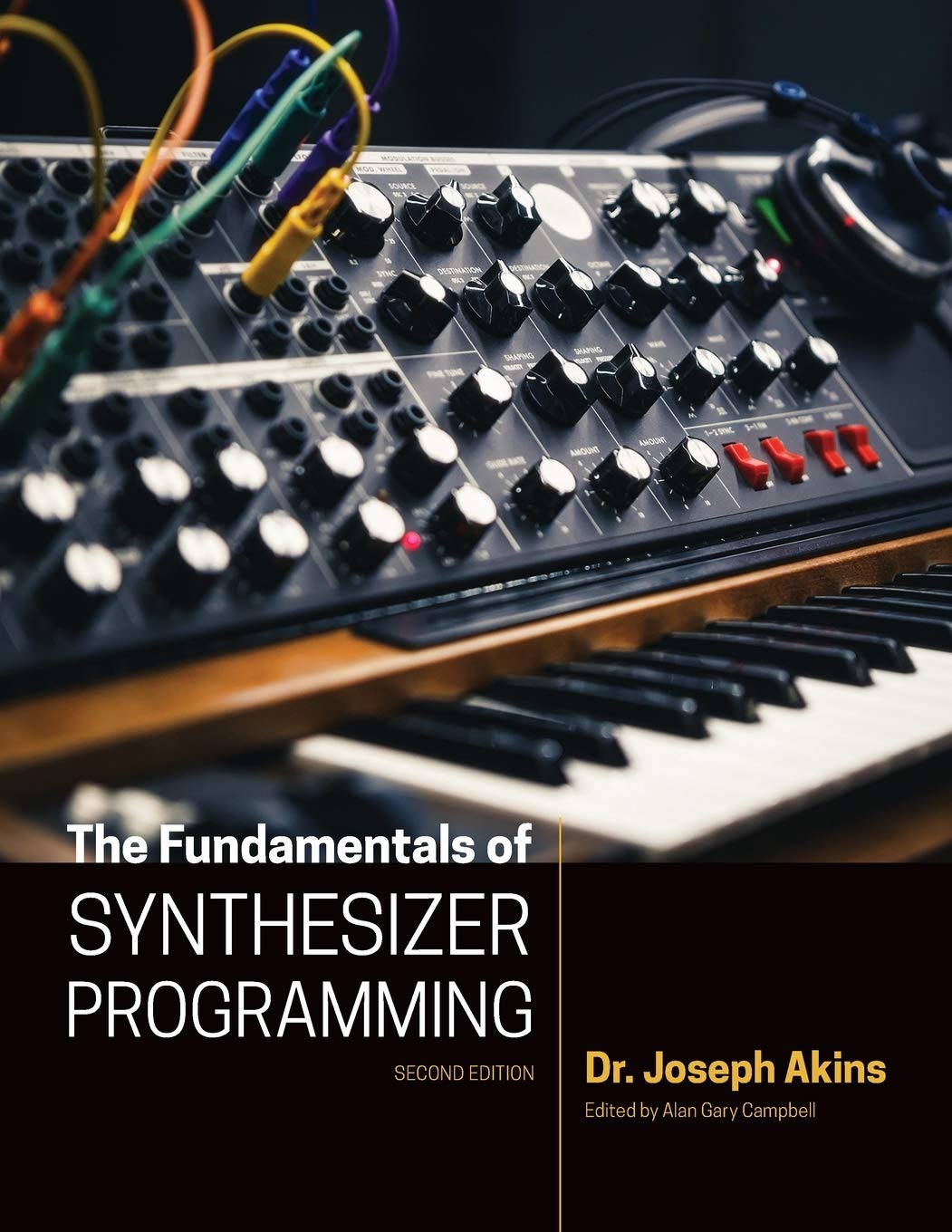

© Matrixsynth - All posts are presented here for informative, historical and educative purposes as applicable within fair use.
MATRIXSYNTH is supported by affiliate links that use cookies to track clickthroughs and sales. See the privacy policy for details.
MATRIXSYNTH - EVERYTHING SYNTH













© Matrixsynth - All posts are presented here for informative, historical and educative purposes as applicable within fair use.
MATRIXSYNTH is supported by affiliate links that use cookies to track clickthroughs and sales. See the privacy policy for details.
MATRIXSYNTH - EVERYTHING SYNTH















